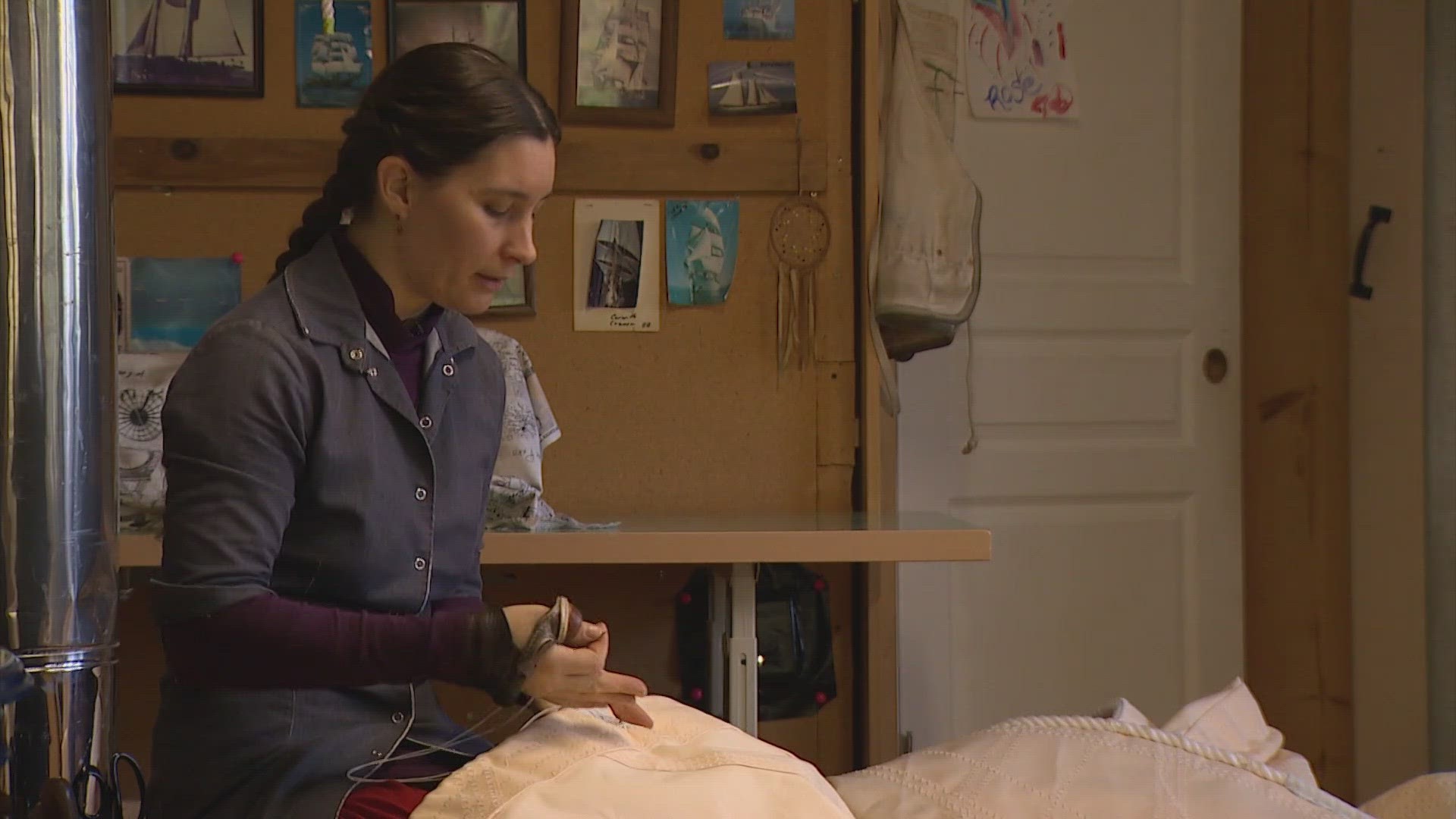MARROWSTONE, Wash. —
Tucked away in a wooded area on Marrowstone Island near Port Townsend is a small, nondescript loft. Inside, history is being preserved.
The Chimenti family is hand-sewing massive sails for large ships called tall ships, one of the few companies to continue the niche practice.
Wayne and Nicole Chimenti started the company Force 10 Sailmakers after falling in love at sea in the 1980s. Their travels brought them to the Pacific Northwest, where they decided to put down roots permanently. Since then, they’ve been hand-sewing sails for ships across the world.
"To the layman, someone who doesn’t know anything about the sea and sails, I say we bring up sails for pirate ships because that brings up the right visual, right?” said Nahja Chimenti, their daughter who now sits at the helm of the family business.
They've made sails for ships including the Star of India in San Diego, the Irving Johnson and Exy Johnson at the Los Angeles Maritime Institute, the Falls of Clyde in Hawaii and more.
Najha said this craft requires incredible precision and time. They use a specific strong fabric that simulates traditional cotton or hemp canvas, crafting each sail specific to the era of the ship it’ll hang from. This means they need to know the history of the ships and what tools were available at the time to ensure they make it in the correct way.
Nahja said there are two big technical benefits to hand sewing. First, hand sewing the islets improves the integrity and the structure of the sail in a way that factory-made, stainless steel hydraulically pressed grommet would not do. Second, a hand-sewn sail allows for repairs to be made on a ship if something breaks, whereas a factory-made sail would not.
She said there’s something to be said about sticking with the slower, traditional way of creating the sails.
“There is a value in the work to be done and not finding a quicker easier way to do it, but learning to do it well yourself and that’s one of the reasons I love handcrafts,” Nahja said.
With thousands and thousands of stitches, these sails can take multiple full weeks of sewing to complete. When finished, the goal is to create a sail that not only propels massive ships around the world, but that can withstand the strongest winds at sea, a talent that Nahja doesn’t take lightly.
"It is a very powerful feeling as you say to know that you can make something with your hands that can take so much load, that can drive so much power," said Nahja, smiling as she pushed a thread through the cloth. "These ships (are) thousands and thousands of pounds and these sails can drive them alone and that’s pretty marvelous."
Watch KING 5's top stories playlist:

